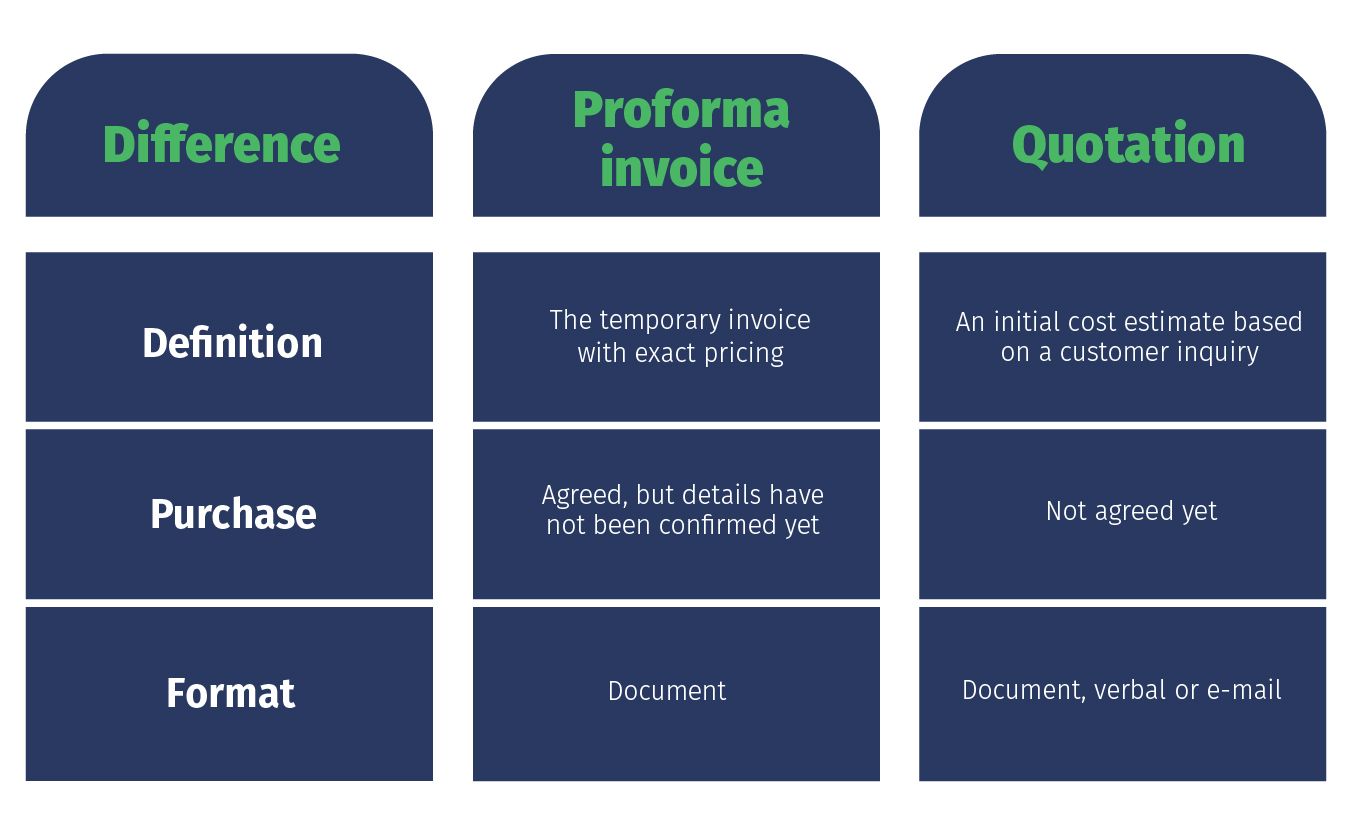
Quotation vs proforma invoice: what’s the difference?
In essence, a proforma invoice serves as a quotation. Indian manufacturers, however, do not send proforma invoices upon quotation requests but only upon order placement. To clarify, most suppliers use quotations for an RFQ process.
The main difference between proforma invoices and quotations is that proforma invoices contain the information you would like to find in an invoice, such as:
- Estimated shipping date
- Payment terms
- Bank account information
Need more details about Proforma Invoice? Visit the article - What is a Proforma Invoice? | Meaning, Examples & Templates.
Meanwhile, quotations only contain details such as:
- Unit prices
- Primary supplier information
- Minimum order quantity.
For more information about Quotation, visit this article - Everything you need to know about Quotations.
It would be best if you also considered the following - quotations and proforma invoices are used before the issue of a tax invoice, but they serve different purposes.
The quotation, also known as a quote, is an informal document with a rough price estimate for goods or services. As a result of an initial customer enquiry about pricing, the cost is not final. If pricing is somewhat customized, this is the first step.
On the other hand, sellers offer Proforma Invoices as a second stage. After a customer has agreed to purchase goods or services, these costs are calculated more thoroughly. Since the proforma invoice is not legally binding, it is possible to edit the details or cancel it completely.
You can use Kernel Finance software to create documents effectively and easily. Kernel allows you to create quotations and proforma invoices and convert them into other invoices with a single click. Explore now.
Compared with a tax invoice is a legally binding document with the final costs of goods or services that are already delivered or will be sent. It is also a sales contract that obligates the customer to be on time.
A quote can be a breakdown of the different costs for a service or a total price for a rather specific product. It could be given in different ways, such as:
- Verbally (by phone or in person),
- in writing (email, letter or hand-written note)
- or more formally, as a document.
It is expected that the customer may disagree with the price, but he simply needs the information to form the right expectations about the terms.
Proforma invoices, however, are always digitally or printed documents that look like legally binding invoices. Unlike an invoice, it does not have a sequential number, payment due date, or payment information. Instead of containing only the date of issue, proforma invoices provide details about the goods or services being purchased and the price, including taxes.
In the present table, you will see a detailed comparison between the proforma invoice and quotation:
